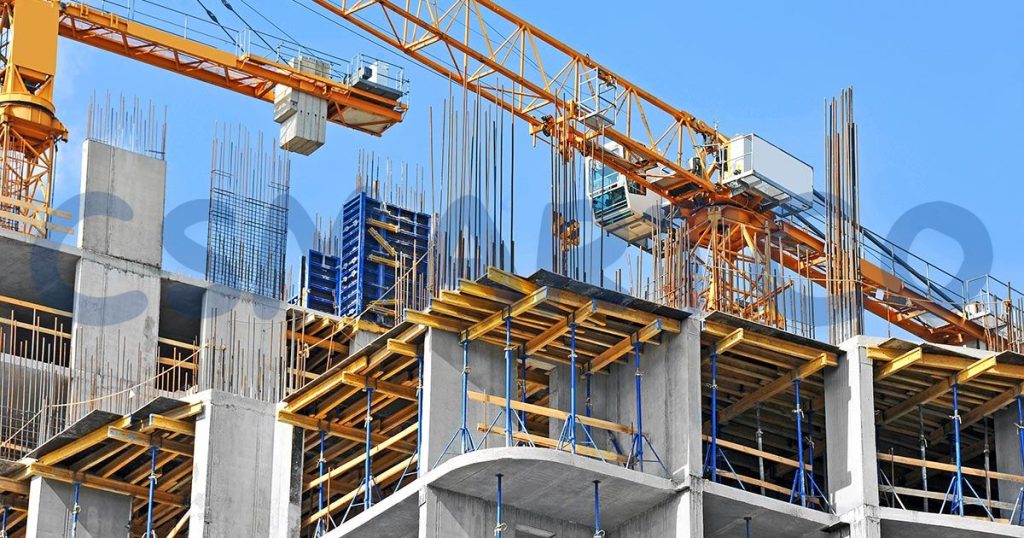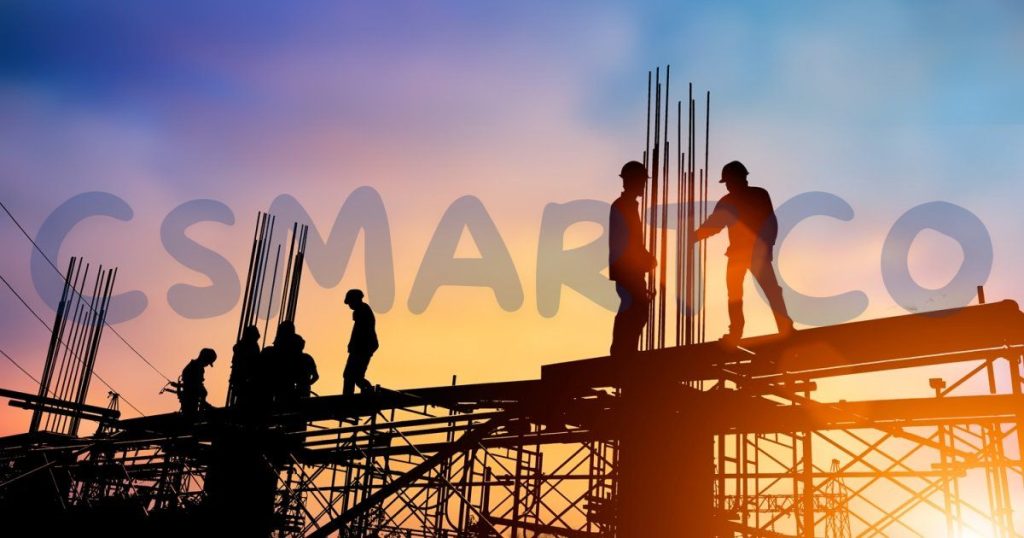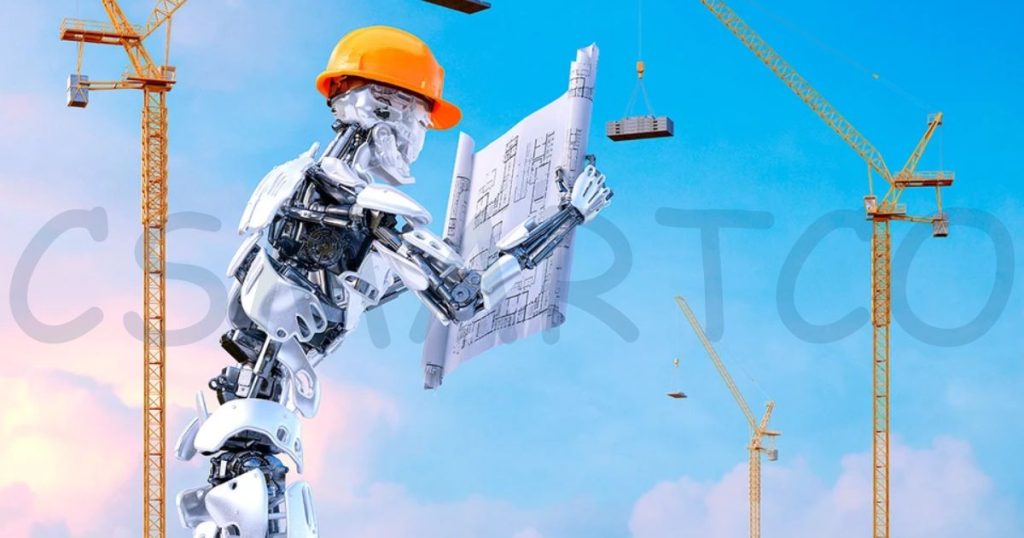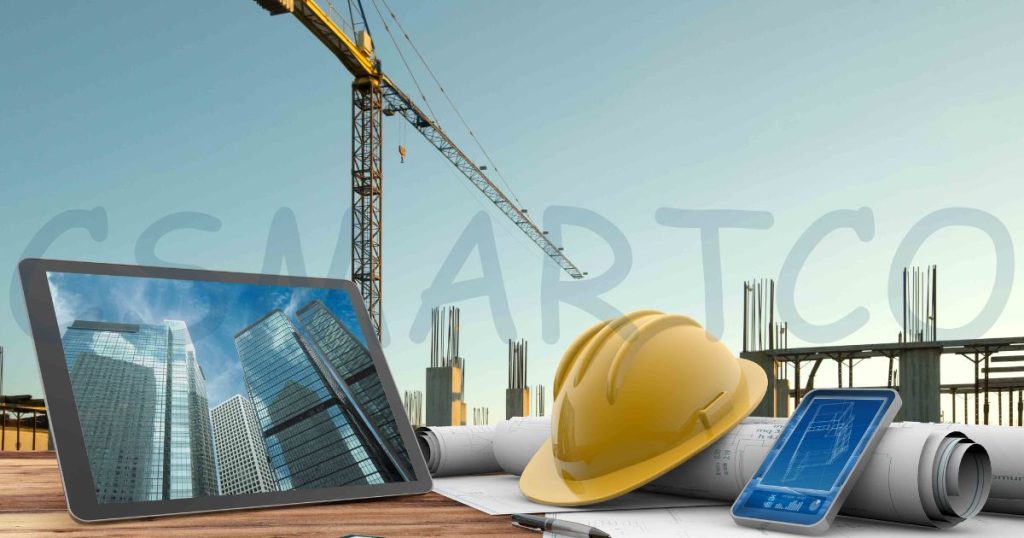Construction is building structures, infrastructures, or facilities, ranging from residential homes to large-scale industrial projects. It involves various stages, from planning and design to execution and completion, making it a complex yet crucial aspect of human civilization.
Crafting a compelling introduction begins with a captivating hook that grabs readers’ attention and piques their interest in the topic of construction. Whether it’s a startling statistic, an intriguing question, or a thought-provoking statement, the hook sets the stage for an engaging discussion on the diverse facets.
Understanding the nuances of historical developments and modern technologies is essential for appreciating their significance in shaping our built environment. From ancient practices to cutting-edge innovations, this introductory exploration sets the groundwork for a deeper dive into the construction world.
Historical Perspective
Construction has been an integral part of human civilization since ancient times, evolving from rudimentary shelters to sophisticated architectural marvels. Early civilizations, such as the Egyptians and Mesopotamians, employed simple techniques like mud bricks and stone masonry to erect structures for shelter, worship, and defense. Over millennia, techniques advanced significantly, driven by technological innovations, cultural influences, and societal needs.

Early Practices
In the early stages of human history, construction primarily focused on meeting basic needs for shelter and protection. Nomadic tribes built temporary dwellings using natural materials like branches, leaves, and animal skins. As settlements became more permanent, early civilizations developed more sophisticated methods, such as adobe brick-making and timber framing.
Construction Techniques
The evolution of techniques reflects the ingenuity and adaptability of human societies throughout history. From the monumental structures of ancient civilizations to the intricate engineering feats of the modern era, these methods have continually evolved in response to changing environmental, cultural, and technological factors.
Innovations like the invention of concrete by the Romans and the development of steel-framed skyscrapers in the 19th century revolutionized the way buildings are constructed, paving the way for taller, safer, and more durable structures.
Milestones in History
Throughout history, several milestones have shaped the trajectory, marking significant advancements in architectural design and engineering.
The construction of iconic landmarks such as the Great Pyramid of Giza, the Roman Colosseum, and the Eiffel Tower stand as enduring testaments to human achievement and innovation. Each milestone represents a leap forward in technology and craftsmanship, leaving a lasting legacy on the built environment.
Types of Construction
It encompasses a wide range of activities tailored to different purposes and industries. Major types include Residential, Commercial, Industrial, Infrastructure and Civil Engineering construction.
Residential Construction
It involves the creation of dwellings for residential purposes, catering to the housing needs of individuals and families. It encompasses various types of homes, including single-family houses, townhouses, condominiums, and apartment complexes.
These projects range in scale from small-scale renovations and additions to large-scale developments, requiring collaboration between architects, builders, and subcontractors to deliver comfortable and functional living spaces that meet the needs and preferences of homeowners.

Commercial Construction
This focuses on constructing buildings and structures for commercial purposes, such as retail stores, office buildings, hotels, and restaurants. These projects often require careful planning and coordination to accommodate specific business requirements and comply with zoning regulations and building codes.
The projects vary in size and complexity, ranging from small retail shops to large corporate headquarters, each designed to create attractive and functional spaces that support the business objectives and enhance the customer experience.
Industrial Construction
It involves the development of facilities for industrial activities, such as manufacturing, production, and distribution. These projects include factories, warehouses, distribution centers, and processing plants, designed to accommodate specialized equipment and processes.
It requires expertise in engineering, logistics, and safety management to ensure efficient operations and regulatory compliance. Projects range from building new facilities to retrofitting existing structures to meet evolving industry needs and technological advancements.

Infrastructure Construction
This involves the creation of essential public facilities and systems that support economic development, transportation, and public safety. These projects include roads, bridges, railways, airports, ports, and utilities such as water and sewage systems.
It plays a crucial role in connecting communities, facilitating commerce, and enhancing quality of life. It requires collaboration between government agencies, engineers, contractors, and stakeholders to plan, fund, and execute projects that meet the needs of society and promote sustainable growth.
Civil Engineering Construction
Civil engineering encompasses large-scale projects that involve the design, construction, and maintenance of infrastructure and public works. These projects require expertise in various engineering disciplines, including structural, geotechnical, environmental, and transportation engineering.
It includes dams, bridges, tunnels, highways, and airports, which have significant societal and environmental impacts. It involves overcoming complex challenges related to site conditions, environmental regulations, and stakeholder interests to deliver safe, reliable, and sustainable infrastructure that meets the needs of communities now and in the future.
Phases of Construction
Projects typically progress through several distinct phases, each with its own set of activities, milestones, and deliverables. The pre-construction phase marks the initial stage of project planning and preparation, where stakeholders define project goals, assess feasibility, and develop design concepts.
It is the execution stage, where actual building activities take place according to the approved plans and specifications. Finally, the post-construction phase involves activities such as commissioning, testing, and handover, as well as ongoing maintenance and monitoring to ensure the project’s long-term success and sustainability.
Pre-construction Phase
During this phase, project stakeholders lay the groundwork for a successful project. This phase includes activities such as site selection, land acquisition, and permitting, as well as budgeting, scheduling, and procurement of materials and services.
Key tasks may include conducting feasibility studies, engaging with regulatory authorities, and assembling a project team of architects, engineers, contractors, and subcontractors. Effective planning and coordination during the pre-construction phase are essential for setting project goals, managing risks, and establishing a solid foundation for successful project execution.
Construction Phase
This phase is where the project transitions from planning to execution, as teams mobilize resources and begin physical construction activities. This phase typically involves site preparation, excavation, foundation work, structural framing, and installation of mechanical, electrical, and plumbing systems.
Throughout this phase, project managers oversee progress, manage resources, and ensure compliance with safety regulations and quality standards. Effective communication and collaboration among project stakeholders are critical for addressing challenges, resolving issues, and keeping the project on track to meet its objectives.

Post-construction Phase
After the work is completed, the project enters the post phase, which involves activities to close out the project and transition it to its operational phase. This phase includes tasks such as final inspections, testing and commissioning of systems, obtaining occupancy permits, and preparing operation and maintenance manuals.
Once the project is handed over to the owner, ongoing maintenance, monitoring, and facility management activities ensure the project’s continued performance and sustainability over its lifecycle. This phase provides an opportunity to evaluate the project’s success, identify lessons learned, and implement improvements for future projects.
Key Components
Construction projects involve several key components that contribute to their success. Design and planning lay the foundation for the project, outlining the vision, objectives, and requirements.
Project management coordinates various aspects, including scheduling, budgeting, and resource allocation, to ensure timely and cost-effective project delivery. Quality control and assurance mechanisms monitor and evaluate project activities to maintain standards and minimize errors, ensuring the final product meets expectations and regulatory requirements.
Design and Planning
Design and planning are critical components of construction projects, shaping the project’s scope, functionality, and aesthetics. During this phase, architects, engineers, and other stakeholders collaborate to develop conceptual designs, detailed blueprints, and construction plans.
Considerations include structural integrity, building code compliance, energy efficiency, and environmental sustainability. Effective planning ensures that project goals are clearly defined, risks are identified and mitigated, and resources are allocated efficiently, laying the groundwork for successful project execution.
Material Selection
Material selection and procurement involve choosing the right materials and resources for the project and ensuring their timely availability. This process considers factors such as cost, quality, durability, and sustainability. Suppliers are carefully vetted, and contracts are negotiated to secure favorable terms and prices.
Methods and Techniques
This encompass the various approaches and practices used to build structures efficiently, safely, and to high-quality standards. These methods include traditional approaches like stick-built construction as well as modern techniques such as prefabrication, modular construction, and advanced robotics.
Factors such as site conditions, project requirements, and budget constraints influence the selection of the methods, with an emphasis on maximizing productivity, minimizing waste, and optimizing resource utilization.
Project Management
Project management plays a pivotal role in overseeing all aspects of a project, from initiation to completion. Project managers coordinate the efforts of design professionals, contractors, subcontractors, and other stakeholders to ensure that the project is completed on time, within budget, and according to specifications.
This involves developing project plans, schedules, and budgets; allocating resources; monitoring progress; resolving issues; and communicating with stakeholders. Effective project management is essential for minimizing risks, optimizing resources, and delivering successful outcomes.
Quality Control
Quality control and assurance processes are implemented throughout the construction project to ensure that workmanship, materials, and final deliverables meet specified standards and requirements. Quality control involves inspecting, testing, and verifying work at various stages of the project to identify and rectify defects or deficiencies promptly.
It focuses on implementing systems and procedures to prevent errors, ensure consistency, and continuously improve processes. These measures help enhance project quality, reduce rework, and mitigate risks, ultimately leading to greater client satisfaction and project success.
Role of Technology
Technology plays a crucial role in transforming the industry, enhancing efficiency, safety, and sustainability. Advancements in digital tools and software enable better project planning, design, and management, leading to improved project outcomes.
From Building Information Modeling (BIM) to drones and robotics, technology integration optimizes processes, reduces costs, and accelerates project timelines. Embracing innovative solutions allows construction companies to stay competitive in a rapidly evolving industry landscape while meeting the growing demands for quality and sustainability.
Building Information Modeling
Building Information Modeling (BIM) revolutionizes the way construction projects are designed, managed, and executed. BIM enables multidimensional digital representations of buildings, facilitating collaboration among project stakeholders and streamlining workflows.
By creating detailed 3D models that integrate architectural, structural, and MEP systems, BIM enhances project visualization, coordination, and clash detection. BIM provides valuable data for cost estimation, scheduling, and facility management, improving project efficiency and reducing errors.
Prefabrication and Modular Construction
Prefabrication and modular methods leverage off-site manufacturing to streamline processes and enhance project efficiency. Prefabricated components are fabricated in controlled factory environments, ensuring high quality and precision while reducing waste and on-site disruptions.
Modular construction involves assembling prefabricated modules into larger structures, offering flexibility, speed, and cost savings. These innovative approaches enable faster project delivery, minimize environmental impact, and address labor shortages, making them increasingly popular in the industry.

Robotics and Automation
Robotics and automation technologies automate repetitive tasks and enhance productivity in operations. Robots can perform various tasks such as bricklaying, concrete pouring, and site inspection with precision and efficiency, reducing labor costs and improving safety.
Automation solutions streamline workflows, from material handling and logistics to equipment operation and maintenance. By deploying robots and automated systems, companies can increase productivity, reduce project timelines, and mitigate risks associated with manual labor.
Drones and UAVs
Drones, also known as Unmanned Aerial Vehicles (UAVs), revolutionize site monitoring, surveying, and inspection. Equipped with cameras, sensors, and GPS technology, drones capture high-resolution aerial imagery and generate accurate topographic maps and 3D models of sites.
Drones enable real-time progress tracking, site visualization, and inventory management, enhancing project transparency and communication. Drones improve safety by conducting inspections in hazardous or hard-to-reach areas without risking human lives.
Challenges in Construction
Industries face various challenges that can impact project outcomes and overall success. These challenges include cost overruns, time constraints, safety regulations, environmental impact, labor shortages, and more.
Budget Management
Cost overruns are a common challenge in projects, often leading to financial strain and project delays. Effective budget management strategies, such as accurate cost estimation, contingency planning, and regular monitoring, are essential to mitigate the risk of exceeding project budgets.
Adopting transparent communication channels and leveraging technology for cost tracking can help identify potential cost overruns early and take corrective actions to stay within budgetary constraints.
Project Scheduling
Meeting project deadlines is critical in construction, yet time constraints can pose significant challenges. Project scheduling plays a vital role in managing timelines, allocating resources efficiently, and ensuring timely project completion.
Delays due to weather conditions, unforeseen circumstances, or supply chain disruptions require adaptive scheduling strategies and risk mitigation plans to minimize project delays and maintain productivity.
Safety Regulations
Safety regulations and occupational hazards pose substantial risks to workers and project stakeholders. Compliance with safety standards, implementation of proper training programs, and enforcement of safety protocols are imperative to prevent accidents and injuries.
Prioritizing safety culture, conducting regular safety inspections, and providing personal protective equipment (PPE) are essential measures to mitigate occupational hazards and promote a safe working environment.
Future Trends
The construction industry is witnessing several transformative trends that are shaping the future of the built environment. These trends encompass the adoption of advanced materials, integration of artificial intelligence (AI) and machine learning (ML), emphasis on green building and renewable energy, shift towards off-site construction methods, and the utilization of augmented reality (AR) and virtual reality (VR) technologies.
Adoption of Advanced Materials
Advancements in materials science have led to the development of innovative construction materials with enhanced properties, such as strength, durability, and sustainability. Materials like engineered timber, carbon fiber composites, and ultra-high-performance concrete are gaining popularity due to their lightweight nature, eco-friendliness, and cost-effectiveness.
Artificial Intelligence and Machine Learning
AI and ML technologies are revolutionizing the construction industry by streamlining various processes, optimizing resource allocation, and enhancing project efficiency. Machine learning algorithms analyze vast datasets to identify patterns, predict project outcomes, and optimize construction workflows.
AI-driven solutions, such as autonomous machinery, predictive maintenance systems, and construction management software, improve decision-making, reduce errors, and increase productivity across all project stages.
Green Building
With growing concerns about climate change and environmental sustainability, there’s a heightened emphasis on green building practices and renewable energy integration in construction projects. Green building certifications, such as LEED and BREEAM, promote energy-efficient design, water conservation, and sustainable materials usage.
Incorporating renewable energy sources like solar panels, wind turbines, and geothermal systems reduces carbon emissions, minimizes reliance on fossil fuels, and lowers operational costs over the building’s lifecycle.
Off-site Construction Methods
Off-site construction, or modular construction, is gaining traction as a cost-effective and time-efficient alternative to traditional on-site building methods. Off-site fabrication of building components in controlled factory environments enhances quality control, reduces construction waste, and accelerates project delivery.
Final Thoughts
The construction industry is undergoing a profound transformation driven by technological innovation, sustainability imperatives, and evolving market dynamics. As outlined, future trends in construction encompass a wide array of developments, ranging from the adoption of advanced materials to the integration of artificial intelligence and machine learning. These advancements are reshaping traditional construction practices and offering new solutions to address emerging challenges.
The emphasis on green building and renewable energy reflects a growing awareness of environmental concerns and the need for sustainable development. By prioritizing eco-friendly design principles and renewable energy sources, the industry is striving to reduce its carbon footprint and promote a more sustainable built environment.
The shift towards off-site construction methods underscores a fundamental shift in construction paradigms, emphasizing efficiency, scalability, and quality control. Modular construction techniques and prefabricated components enable faster project delivery while minimizing waste and enhancing project resilience.
The adoption of augmented reality and virtual reality technologies holds immense potential for revolutionizing project planning, design, and execution processes. These immersive technologies facilitate enhanced collaboration, visualization, and decision-making, ultimately leading to more efficient and successful construction projects.
The future of construction lies in embracing innovation, sustainability, and collaboration to address complex challenges and unlock new opportunities for growth and development in the built environment. By staying at the forefront of technological advancements and embracing sustainable practices, the construction industry can continue to thrive in an ever-changing landscape.

